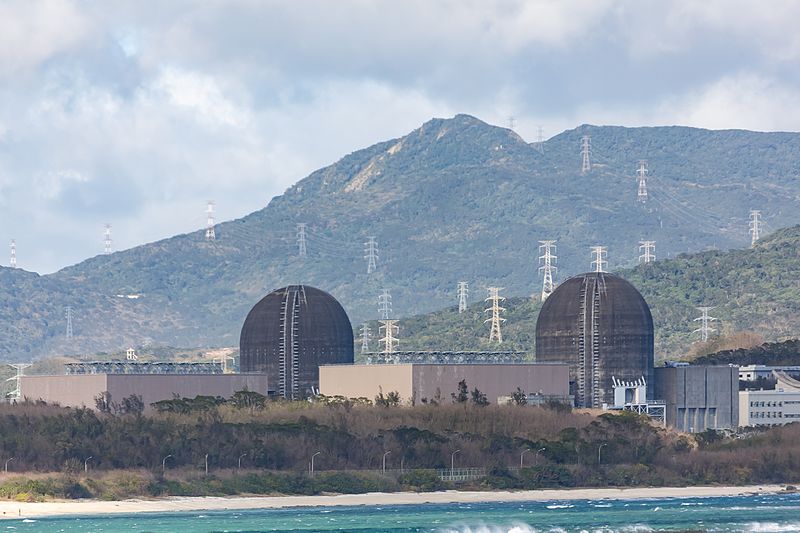Since the nuclear disaster in Fukushima, doubt regarding nuclear power began to spread in Taiwan, which sits in the same seismic zone as Japan. Nuclear power might be a solution for needed cheap energy. However, nuclear power has not been studied thoroughly and many of its problems remain unsolved.
Nuclear energy has been claimed as an answer to the need for clean energy due to its low amount of carbon dioxide emissions compared to power plants that burn fossil fuels. However, the building of the power plants, the process of mining uranium, and the transport of radioactive waste releases a fair amount of carbon dioxide. Combining all of these outputs, electricity from nuclear energy emits 90 to 140 grams of carbon dioxide per kW/h of electricity produced. The emissions will rise continuously due to the reduction of uranium resources in the future. According to the Nuclear Power Insights by J.W. Storm van Leeuwen, after 35 years carbon dioxide emissions will be higher than gas burning plants for the same amount of electricity.
Of all kinds of environmental issues, radioactive waste is probably the most devastating, due to its uncertainty and the lack of solution for dealing with it. All we can do is to bury it underground and wait for over ten years until the radiation is gone. During the process, more and more radioactive waste will fill the dump site until it is full, then we will have to find another site to cram even more waste.
The most concerning issue regarding nuclear power in Taiwan is its safety. Nuclear industries claim that the safety of nuclear energy is certain, which is a complete myth. An accident can happen in any power plant at any time. Even during normal operation, radioactive materials affect the water and air near the reactor.
Human errors are considered the most dangerous to nuclear power. In the past 20 years, more than five hundred violations have been committed at all four nuclear power plants in Taiwan. We can’t guarantee what will happen with the next false move; it might pass unknown like the previous five hundred cases, or it could cause terrible disasters like Chernobyl, the most severe nuclear disaster in history.
Some people support using nuclear power because it’s relatively inexpensive. However, the cost will not be very low if other considerations are taken into account. The construction of one reactor is extremely expensive; it makes up 70% of the cost of nuclear electricity. Two nuclear power plants could cost about 10 billion USD. Delays in the construction can also increase the price, which happened frequently during the construction of the fourth power plant in Taiwan.
Uncertain fuel costs have a great impact for operating costs, since the amount of uranium, like oil and natural gas, is decreasing every year. Price changes are hard to foresee when some politically unstable countries control more than 30% of global uranium production; these include Kazakhstan, Niger, Namibia, Russia, and Uzbekistan.
With all these flaws, it is hard to believe that nuclear energy is a path for the future of energy. Instead, renewable energy like solar and wind might be the best opportunity. They produce much less pollution, much more safely. The only problem with sustainable energy sources is price, but if we continue to develop these technologies, we can reach the ultimate goal of unlimited energy.





0 Comments